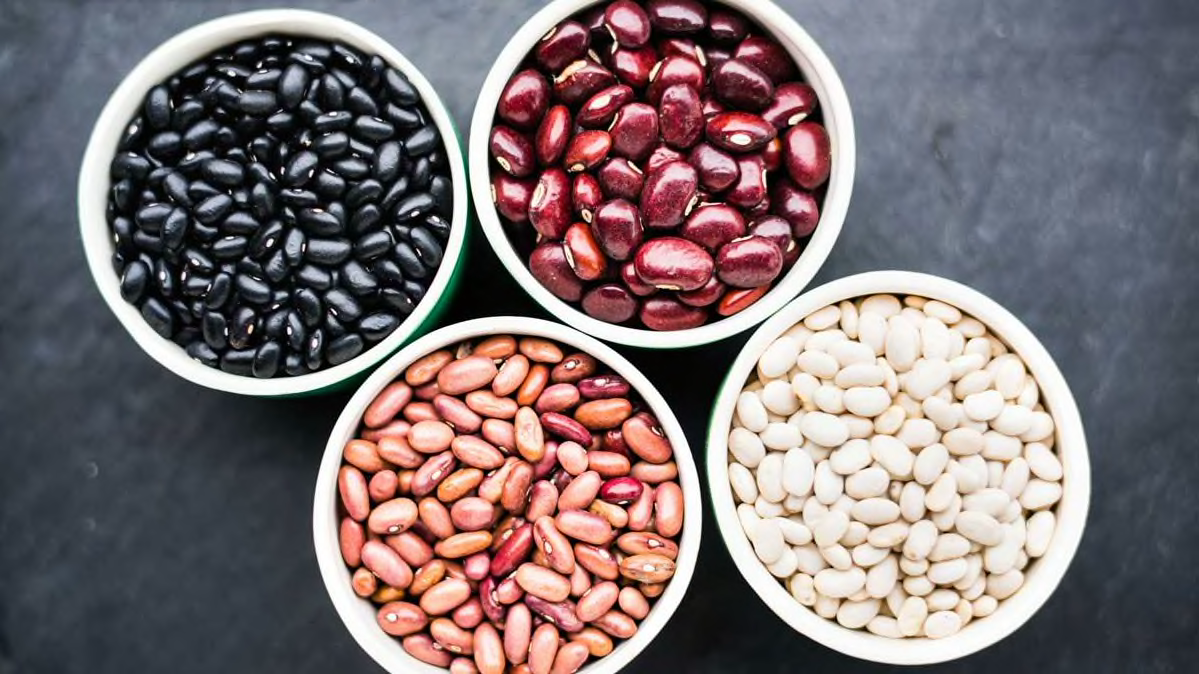
Though the term "superfood" is applied to many foods these days, beans really may be deserving of the title. In addition to being inexpensive (dried beans can cost just pennies per serving), they're full of nutrients, including copper, folate, iron, magnesium, potassium, and zinc, as well as protein and fiber.
One study found that eating beans four times per week reduced heart disease risk by 22 percent. Another showed that bean eaters may be less likely to develop type 2 diabetes and may have better blood sugar control if they do have the disease.
"Beans promote good health and can be used many ways, including in soups, salads, dips, and desserts," says Julie Garden-Robinson, Ph.D., a food and nutrition specialist with the North Dakota State University Extension Service. Here, six bean facts you might not know.
They're a vegetable and protein. "Technically, legumes are a vegetable, but more of a starchy vegetable, like a baked potato," says Libby Mills, R.D.N., a spokeswoman for the Academy of Nutrition and Dietetics. Still, beans are a top source of plant protein, with about 15 grams per cup. Getting protein from plants is good for your health.
For instance, a study of 785 older adults from four countries found that every 20-gram increase in legume intake (about an ounce) was linked to a reduced risk of dying (up to 8 percent) from any cause over the seven-year study period. Beans also contain resistant starch, a type of fiber that helps increase the amount of good bacteria in the gut and may help control inflammation, reduce colon cancer risk, and improve satiety.
You need a variety of them. Great Northern and navy beans have more calcium; cranberry beans score high in folate; and adzukis, garbanzos, and limas are particularly high in iron. Navy beans are packed with resistant starch, adzukis are high in potassium, and red and black varieties are rich in disease-fighting antioxidants.
They help with weight loss. A review of 21 studies published in the American Journal of Clinical Nutrition found that people who ate about 2.5 to 9 ounces of beans per day lost three-quarters of a pound more over six weeks than those who didn't eat beans. Researchers think this may be because beans increase the sense of fullness and modulate blood sugar levels.
They help cut cholesterol. Beans are high in soluble fiber; 5 to 10 grams of it per day can reduce LDL ("bad") cholesterol by up to 5 percent, according to the Department of Health and Human Services. Cooked beans contain 0.6 to 2.4 grams of soluble fiber per half-cup.
Canned beans are good, too. Dried beans require soaking before cooking and about an hour on the stove. Most of the prep is hands-off, but there's no doubt that canned beans are simply more convenient. And they supply the same nutrients—but often contain added salt. So opt for lower-sodium varieties, or drain and rinse canned beans before you use them to reduce sodium by 25 to 40 percent.
You can solve the gas problem. The flatulence factor is caused by the fiber in beans fermenting in the large intestine. One study found that half the people who ate a half-cup of beans daily had gas during the first week, but symptoms decreased after that. "Gradually increasing your fiber intake will help your gut adjust," says Mills. "Drinking plenty of water also helps fiber move through your system faster." Other tips include soaking beans before cooking and using products such as Beano, which contain gas-busting enzymes.
Editor's Note: This article also appeared in the October 2018 issue of Consumer Reports On Health.
5 Tips to Change the Way You Eat
Does your diet need an overhaul? On the 'Consumer 101' TV show, Consumer Reports' expert Paul Hope offers host Jack Rico 5 healthy eating tips.




















